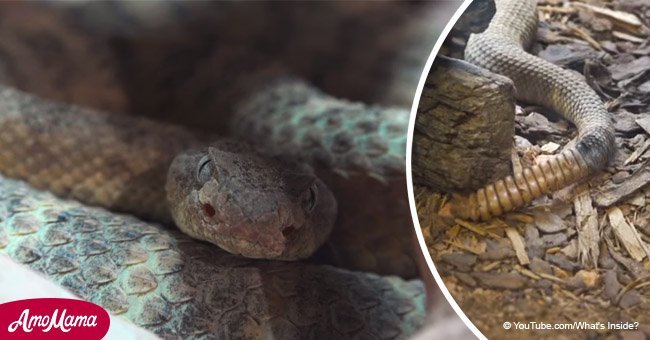
Creepy video shows what is inside a rattlesnake's tail
Have you ever wondered what makes the sound in a rattlesnake’s rattle? A father and son duo has answered the question using their YouTube channel.
On their channel called “What’s Inside?” they dissect a rattlesnake’s rattle. What they found was not what anyone was expecting.
When cut open the rattlesnake’s rattle it shows that it consists of a number of hollow, interlocked segments which are made of keratin protein. Keratin is the same substance that our nails are made out of.
The rattle is created by modifying the scales which cover the tip of the tail. When the “shaker” muscle in the tail contracts it makes the segments vibrate against each other, causing the rattling sound.
For more on this story go to our Twitter account @amomama_usa. The rattling sound is amplified only because the rattle segments are hollow.
There are no grains or little rocks inside the rattle. The segments are joined and made to strike each other with the help of their muscles.
A
can shake their rattles at the frequency of about 50 times per second. They can this motion for around three to four hours.
When the snake is born it has a “prebutton” at the end of its tail. This prebutton is replaced by a “button” after the first skin is shed away.
However, the snake can’t make a sound until at least a second segment is added when the skin is shed again. Every time the snake sheds its skin, a new rattle segment is added on the tail.
Rattlesnakes may shed their skin several times a year, depending on the food supply and growth rate. They belong to the Viperidae family.
There are about 30 species ranging in size from 1 to 7 feet and they can live for 25 years. The rattlesnake is native to the Americas.
They can be found in the wild and are common in Mexico and the southern US. They are usually found in open, rocky places.
Arizona is home to 13 species of the venomous reptile more than any other state. The state is also known to be home to the black Arizona rattlesnake.
An interesting fact about rattlesnakes is that they have very developed social and parenting skills, which is unusual for reptiles. Parents actually take care of their young together.
